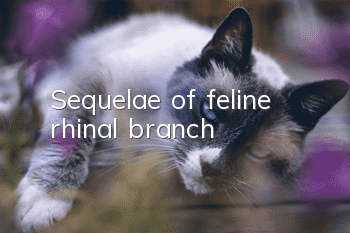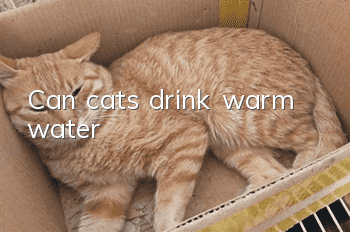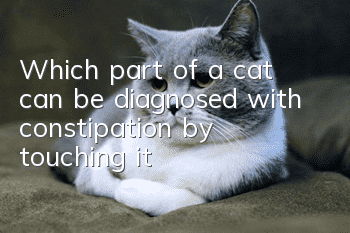Sequelae of feline rhinal branch

Sequelae of feline rhinal bronchus may cause an increase in cat eye secretions and abnormal respiratory system, mainly showing symptoms such as intermittent sneezing, runny nose, and watery eyes, especially when the weather gets colder. Worse, don’t take it lightly after your cat’s infection with rhinoplasty improves. You should keep your cat warm every day and give it more lysine to increase its resistance.
What should you pay attention to after your cat recovers from nasal infection:
1. Do not take a bath
Try not to take a bath within one month after recovery. Bathing will reduce the cat's body resistance. If you don't dry it in time after taking a bath, the symptoms of nasal branch may appear again. During this period, the indoor temperature should be controlled to avoid catching cold.
2. Avoid going out within one month
Going out will increase the chance of contact with the outside world and increase the risk of recurrence. It is possible to come into contact with cats outside that are suffering from feline nasal congestion or stray cats that carry a large amount of viruses, causing recurrence. If you really need to go out, use a cat carrier and put the cat in the carrier before taking it out. Be sure to avoid contact with cats of unknown origin.
3. Supplementing nutrition
The recovery period is the period when the body needs to supplement nutrition to restore its resistance. Supplementing nutrition is very important. Enrich daily food. Don’t just feed cat food. You can also add some healthy food. Or you can choose to feed your cat a nutritional paste, such as Miaoxiang Cat Nutritional Paste, which can also help cats return to a healthy body better and faster.
4. Continue to take lysine for a long time
The feline rhinotracheitis herpes virus cannot be killed and will still be in the body. Long-term continued use of Lysine can help cats inhibit the arginine needed for virus reproduction, thereby fighting the virus. The battle with cat nasal bronchus is long-term, so you must persist in taking it. Some cats will still have sequelae such as sneezing even after recovery. There is no way to completely remove these sequelae, and they can only be reduced by insisting on long-term care.
- Why can’t I keep a Napoleon cat?
- What should I do if my cat has a broken bone?
- Is it okay for cats to eat homemade cat food? (Is homemade cat food good?)
- Beware of bad breath in cats
- How to deworm cats? Click in to find out!
- What causes cats to have diarrhea? What causes cats to have diarrhea!
- What should cats eat to replenish their health after giving birth?
- What causes scabs on cats?
- Morphological characteristics and feeding methods of Ragdoll cats_How much does a Ragdoll cat cost?
- Explain the types of cat litter and their advantages and disadvantages!



